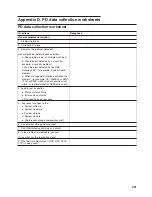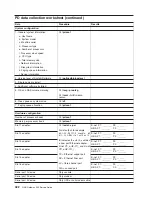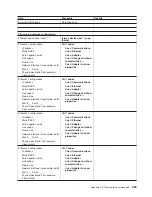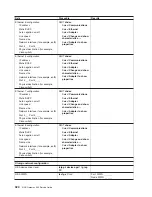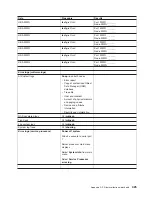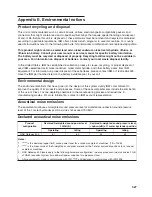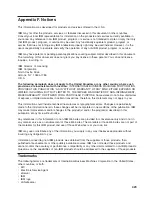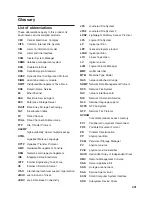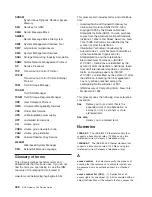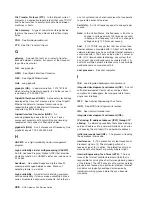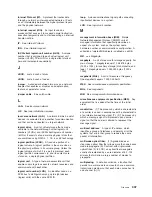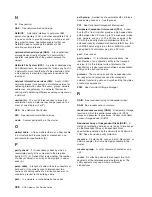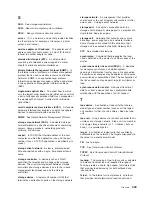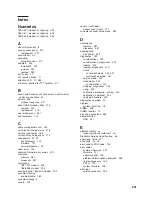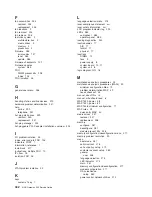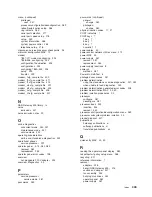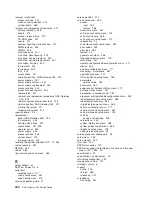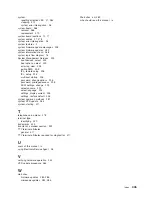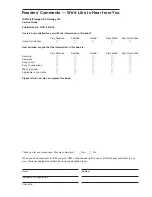
machine, the server the supplying machine.
2) This is
not a common term to me. 3) If we do use this term,
shouldn’t it be
client/server model
for consistency with
client/server
?
cluster.
In high-availability cluster multiprocessing
(HACMP), a set of independent systems (called nodes)
that are organized into a network for the purpose of
sharing resources and communicating with each other.
(1) A station that consists of a control unit (a
cluster
controller
) and the terminals attached to it. (2) A group
of APPN nodes that have the same network ID and the
same topology database. A cluster is a subset of a
network identifier (NETID) subnetwork. (3) Loosely
coupled collection of independent systems organized
into a network for the purpose of sharing resources and
communicating with each other. Can be used to create
highly-available systems. See also
high-availability
cluster multiprocessing (HACMP)
and
network identifier
(NETID)
.
collision avoidance.
In carrier sense multiple access
with collision avoidance (CSMA/CA), the process of
sending a jam signal and waiting for a variable time
before transmitting data. The process is designed to
avoid two or more simultaneous transmissions.
Common Internet File System (CIFS).
A protocol that
enables collaboration on the Internet by defining a
remote file-access protocol that is compatible with the
way applications already share data on local disks and
network file servers.
communications protocol.
In networking, a set of
standards defining how computers are to exchange
information.
connect.
In a LAN, to physically join a cable from a
station to an access unit or network connection point.
Contrast with
attach
.
control unit.
A processor electronics assembly in a
storage controller that exposes logical unit numbers
(LUNs) to the storage network and connects internally
to the storage controller’s disk drives. A storage
controller can have 1 to
n
control units, but typically has
one for each path group. See also
logical unit number
(LUN)
.
CRC.
See
cyclic redundancy check
.
CRU.
See
customer-replaceable unit
.
customer-replaceable unit (CRU).
An assembly or
part that a customer can replace in its entirety when any
of its components fail. Contrast with
field-replaceable
unit
.
cyclic redundancy check (CRC).
(1) A redundancy
check in which the check key is generated by a cyclic
algorithm (T). (2) A system of error checking performed
at both the sending and receiving station after a
block-check character has been accumulated.
D
DASD.
See
direct access storage device
.
data bus.
A bus used to communicate data internally
and externally to and from a processing unit, storage,
and peripheral devices (A).
device identifier (ID).
An 8-bit identifier that uniquely
identifies a physical I/O device.
device parity protection.
A function that protects data
stored on a disk-unit subsystem from being lost
because of the failure of a single-disk unit in the
disk-unit subsystem. When a disk-unit subsystem has
device parity protection and one of the disk units in the
subsystem fails, the subsystem continues to run. The
disk-unit subsystem reconstructs the data after the disk
unit in the subsystem is repaired or replaced. See also
RAID
.
DHCP.
See
Dynamic Host Configuration Protocol
.
DIMM.
See
dual inline memory module
.
direct access storage device (DASD).
A
mass-storage medium on which a computer stores data.
Contrast with
random access memory (RAM)
.
Direct Memory Access (DMA).
A technique in which
an adapter bypasses a computer’s CPU, and performs
the transfer of data between itself and the system’s
memory directly.
DMA.
See
Direct Memory Access
.
DNS.
See
Domain Name System
.
Domain Name System (DNS).
In the Internet suite of
protocols, the distributed database system used to map
domain names to IP addresses.
drive bay.
A receptacle in the NAS Gateway 500 into
which you insert a hard-disk-drive module. The bays are
in storage units that can be located in a different rack
from the the NAS Gateway 500.
dual inline memory module (DIMM).
A small circuit
board with memory-integrated circuits containing signal
and power pins on both sides of the board.
Dynamic Host Configuration Protocol (DHCP).
A
protocol defined by the Internet Engineering Task Force
(IETF) that is used for dynamically assigning IP
addresses to computers in a network.
E
EIA.
See
Electronic Industries Association
.
EISA.
See
Extended Industry Standard Architecture
.
434
NAS Gateway 500 Service Guide
Summary of Contents for TotalStorage NAS Gateway 500
Page 1: ...IBM TotalStorage NAS Gateway 500 Service Guide GY27 0418 00 ...
Page 2: ......
Page 3: ...IBM TotalStorage NAS Gateway 500 Service Guide GY27 0418 00 ...
Page 16: ...xiv NAS Gateway 500 Service Guide ...
Page 20: ...xviii NAS Gateway 500 Service Guide ...
Page 36: ...System logic flow Note Not all components are supported 16 NAS Gateway 500 Service Guide ...
Page 52: ...32 NAS Gateway 500 Service Guide ...
Page 58: ...38 NAS Gateway 500 Service Guide ...
Page 112: ...92 NAS Gateway 500 Service Guide ...
Page 266: ...246 NAS Gateway 500 Service Guide ...
Page 326: ...306 NAS Gateway 500 Service Guide ...
Page 353: ...Chapter 11 Removal and replacement procedures 333 ...
Page 392: ...372 NAS Gateway 500 Service Guide ...
Page 402: ...382 NAS Gateway 500 Service Guide ...
Page 412: ...392 NAS Gateway 500 Service Guide ...
Page 440: ...420 NAS Gateway 500 Service Guide ...
Page 446: ...426 NAS Gateway 500 Service Guide ...
Page 448: ...428 NAS Gateway 500 Service Guide ...
Page 466: ...446 NAS Gateway 500 Service Guide ...
Page 469: ......
Page 470: ... Printed in U S A GY27 0418 00 ...
Page 471: ...Spine information IBM TotalStorage NAS Gateway 500 NAS Gateway 500 Service Guide GY27 0418 00 ...


